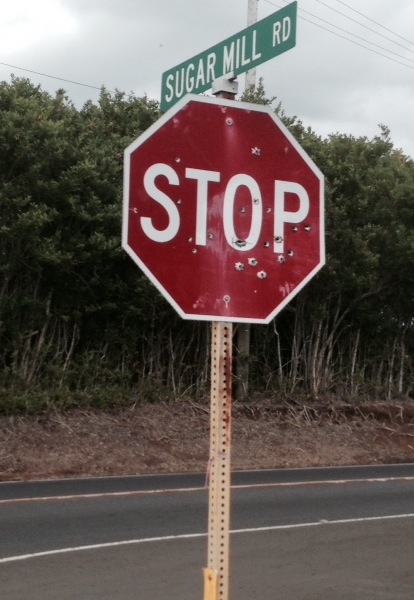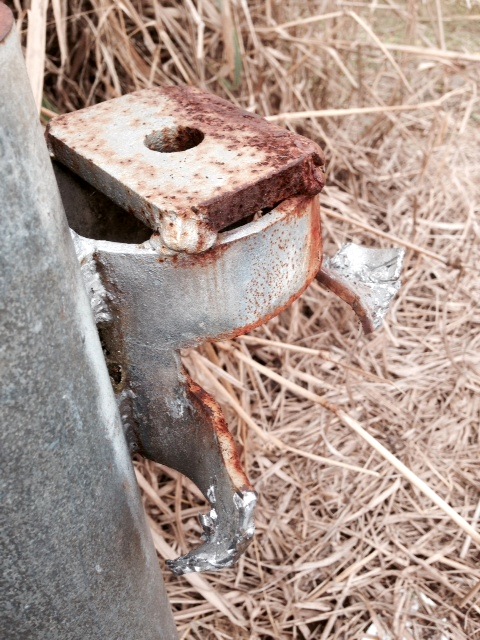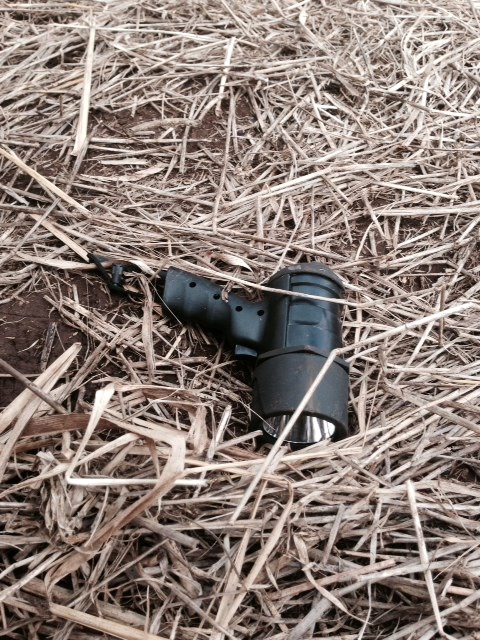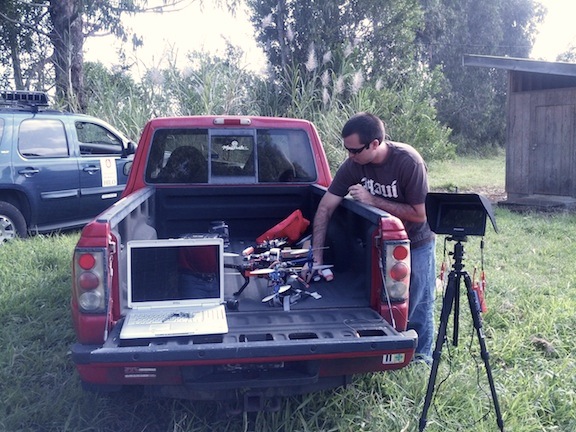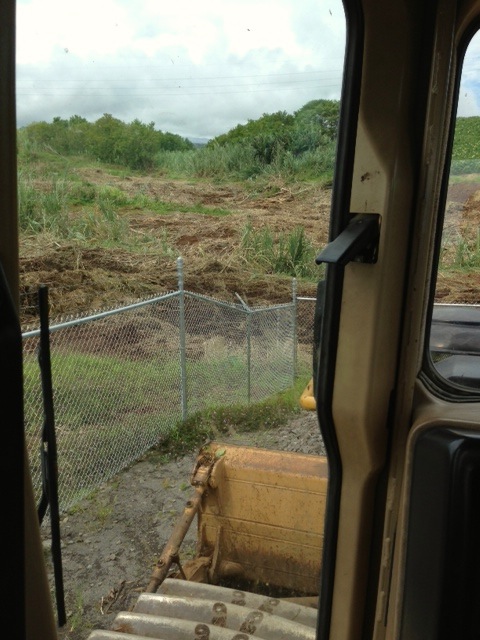Richard Ha writes:
I was part of a four-person panel at the recent GMO Summit. I was spokesperson for the farmer group that organized a convoy around the County building a short time ago. The others were
- Kamana Beamer, who gave the cultural perspective, which is the long term view of things
- Hector Valenzuela, who presented a negative view of biotechnology
- Dr. Dennis Gonsalves, who gave a pro-GMO point-of-view.
Three of the speakers, then, all coming from different perspectives, were pro-GMO. I will ask the speakers if they are willing to give a synopsis of their presentation, and if so, I will post them here.
As farmers, our primary concern is that banning the use of GMOs only on Hawai‘i Island, while allowing them to be used on the other Hawaiian islands, will slowly but surely drive us out of business. We are unwilling to be led to the slaughter.
Here is what I presented at the GMO Summit:
Aloha. I am Richard Ha. Although we have a farm, I am here today as a representative of Hawaii Farmers and Ranchers United. This is a spontaneous farmer group that recently organized a convoy of more than 50 cattle, papaya and other farm trucks, as well as nearly 200 farmers, around the County building. It consists of the Hawaii Papaya Industry Association, the Big Island Banana Growers Association, the Big Island Cattlemen’s Council, the Hawaii Floriculture and Nursery Association and various Farm Bureau chapters.
In all my time in farming, I have never seen farmers so united and concerned about one issue. Why are they so concerned? Because they feel their survival is at stake.
Farmers are price takers, not price makers, and when the cost of energy quadrupled in the last 10 years, we farmers could not increase our prices to cover the increase in cost. We know how vulnerable we are to rising oil prices. The anti-GMO bill takes away future cost-saving tools for farming.
Here’s a reality check on growing food.
Hawai‘i is located in the humid subtropics and it is a weed, bug and plant-disease paradise. We have no winter here to help us kill off bugs.
Farmers are not pesticide-crazed sprayers of toxic chemicals. They use cost-effective solutions to the pest problems of their particular crops. They use what’s least toxic, because they don’t want to harm themselves. They don’t overspray, because that wastes money. Farmers have common sense.
When we send farmers into battle against the pests, don’t shoot arrows at their backs. When we send them into battle against pests that use cannons, don’t send them out with swords and clubs.
If we do not want the large biotech companies to grow corn for seed, then write a bill that prohibits that. If we do not want GMO foods at all, then start with corn flakes and soda and ban those.
Consider these facts:
- Hawai‘i imports more than 85 percent of its food. That’s almost all of our food.
- Hawaii uses oil to generate more than 70 percent of its electricity. The U.S. mainland, which is both our supplier and our competitor, uses oil for only 2 percent of its electricity – so its costs are not skyrocketing from rising oil prices as much as ours are.
- The price of oil has quadrupled in the last 10 years, and will probably go higher.
- As oil prices rise, Hawai‘i becomes less and less food secure.
These are the realities that Big Island farmers face every day. We must be one of the least food secure places in the world.
“Food security” means being able to get adequate and sufficient food, regardless of where it comes from. These days, it comes from all over the world. We are able to buy food from all over because money comes into our economy from the outside, with military spending and tourism being primary contributors. That provides us with money to pay for general services to our society and to buy our food.
Food security involves farmers farming. If the farmer makes money, the farmers will farm. And if the farmers make money, then their products will be competitive with imported foods. And that will mean lower cost foods for all.
Try to encourage those things that gives our farmers a competitive advantage. Leverage our sun that shines all year long. Don’t ban GMO corn that can give our cattle ranchers a fighting chance.
Maybe we can grow the grain that will encourage poultry farms and fish, too.
If we had poultry and cattle manure, our organic farmers would have a nitrogen source that could help them produce food for a profit.
Let’s all sit down and talk. Farmers are not the enemy.
In the 1800s, our Hawaiian population went from an estimated 700,000 to 50,000. We almost went extinct.
I’m sure they would have used new technology vaccines if they had been available.
Farmers have looked at all sides of the argument and have come down on the side of peer-reviewed science.
I would like to make one farmer observation about pesticides. The
dose makes the poison. Margaret Wille said she wants to ban the use of Roundup. Senator Ruderman introduced a bill to ban Roundup last session.
Let’s say there is a four-foot patch of weeds that one wants to control using Roundup. The amount of spray needed, which is already diluted 50-1 with water, is less than the thickness of a piece of typing paper. By contrast, rainfall in one year at Pepe‘ekeo
would result in a column of water 10 feet high over that spot. As I said, the dose makes the poison.
Previous to Roundup, farmers here used Paraquat, which is a skull-and-crossbones grass poison.
We don’t want to go back to that. We need a little bit of common sense here.
Here are three areas of concern to farmers:
- Farmers on the other islands would be able to use new biotech seeds, while Big Island farmers would not. I just saw where a British researcher said he developed a technique that would give every plant the ability to fix nitrogen from air. But if other
islands could use it and we could not, this would eventually put Big Island farmers out of business. The Tomato Spotted Wilt Virus (TSWV) threatens the State’s tomato industry, and there is a biotech solution that is ready to be implemented. Again, if other islands can use it while while Big Islanders cannot, this will eventually drive Big Island tomato farmers out of business.
- Under Brenda Ford’s bill, papaya and GMO corn farmers and ranchers have 30 months to get out of those crops or they risk 30 days in jail. Making criminals of farmers is just beyond belief.
- It isn’t the strongest or smartest that survive, but the ones that can adapt to change. This saying is attributed to Charles Darwin.
Although the bills by Ford and Wille might seem new and different and brave, below the surface they both prevent adapting to change. And that is one of the main reasons why farmers are against both attempts to prevent the planting of bioengineered
plants.
Farmers and ranchers have an abundance of common sense. My dad was a farmer. He only went to the sixth grade, but when I was 10 years old, he told me: “Find two solutions for every problem and then find one more just in case.”
He said, There are thousand reasons why no can. I looking for the one reason why CAN adapt to change.

